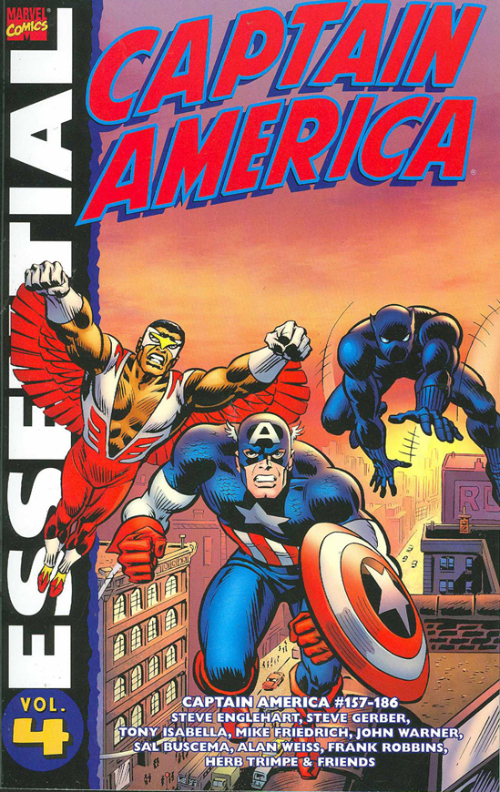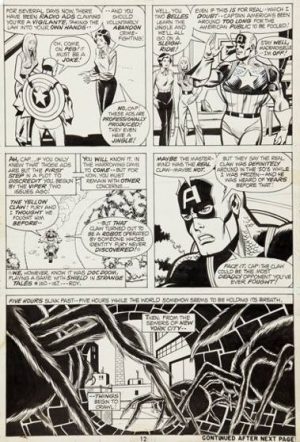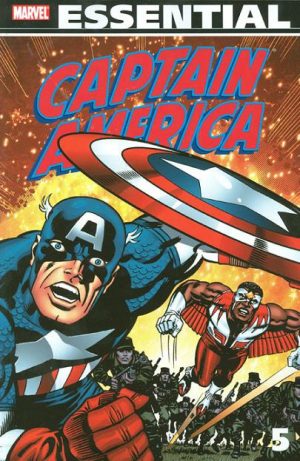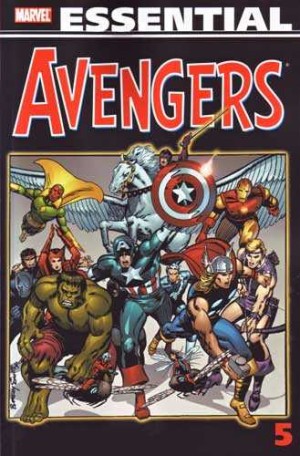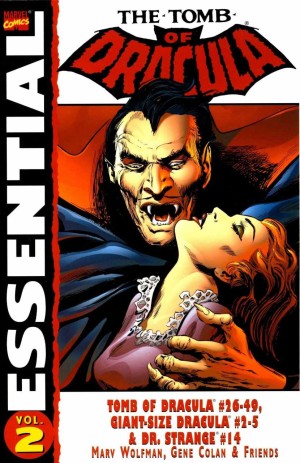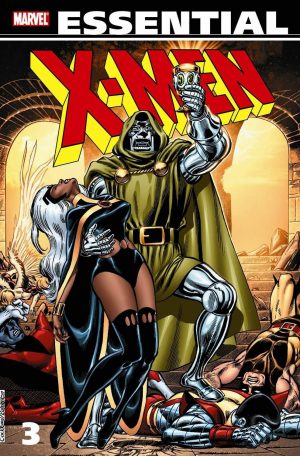Review by Win Wiacek
This fourth Essential collection presents Captain America under Steve Englehart from early 1973 to summer 1975, an especially tumultuous period in US history. In Essential Captain America Vol. 3 the Sentinel of Liberty defeated an ugly past in the form of the replacement Captain America and Bucky of the 1950s, so Steve Rogers hoped for less troublesome times, but Englehart factors in how Captain America was the unhappy, uncomfortable symbol of a divided nation. Who and what did he really represent?
A key aspect of what rolls out is easily defeated, but vengeful villain the Viper, whose civilian career is in advertising. Using the weapons and tactics of Madison Avenue he begins a TV campaign questioning Captain America’s heroism, honesty and sanity. When Cap accidentally crosses a line, people begin to believe it. It’s one of a number of plots questioning the virtue of accepted institutions, incorporating corrupt police, a psychiatric evaluation overseen by criminal shrink Dr. Faustus, and the ultimate instigator is unmasked and shockingly dispatched within the White House itself. This story is available separately as Secret Empire.
These occur, though, within the context of superhero thrills. The X-Men, at that time almost forgotten, have a guest slot; the now questionable Yellow Claw unleashes giant bugs, deadly slave assassins and reanimated mummies; Cap’s mysterious new super strength causes the Falcon to visit Wakanda for an upgrade of his own; and several long-running characters are introduced, two in other guises later connected with the Thunderbolts.
By halfway Englehart has thoroughly mirrored contemporary America as a nation reeling from a loss of idealism caused by Vietnam and Watergate. Shocked and stunned, Steve Rogers searches his soul and realises he cannot be the symbol of such a country. Instead the Falcon trains duplicate Captain Americas while Steve Rogers finds a new way to fight crime.
Midway through that story the solid clarity of Sal Buscema’s pencils are replaced by the cinema-influenced movement supplied by Frank Robbins, not to all tastes at the time. It should also be noted that other writers also scripted Englehart’s plots on occasion.
With Nomad and the Falcon largely operating separately, they’re drawn together again via tragedy when Cap’s greatest enemy turns up and drops a stunning revelation. On that staggering cliffhanger note this epic collection concludes, leaving other writers to pick up the plot in Essential Captain America Vol. 5.
You may wince at at some of the dialogue from this era of “blacksploitation” and ethnic awareness, Nightshade’s exploitative costume and the Yellow Claw’s very presence, let alone the cringe-worthy battle between Cap and three chicken-themed villains. However, despite the odd mis-step these tales of matchless courage and indomitable heroism are fast-paced and action-packed, and totally engrossing for the injection of a political undercurrent. Additionally they bear the cultural significance of being crucial in informing the political consciences of the youngest members of post-Watergate generation.
If preferred, these stories can be found in colour spread over Marvel Masterworks: Captain America volumes 8 and 9, or in a forthcoming Epic Collection.
